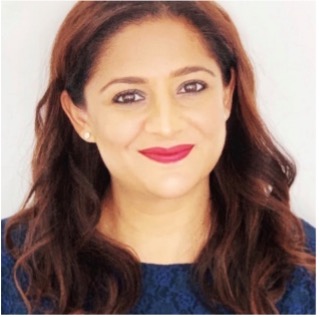If 2020 was ‘The Year of Blur’, then 2021 was certainly The Year of Schlep.
As someone who is passionate about developing early career talent, I found myself having to constantly scramble for ever-higher bars in creative, bespoke, approaches to researcher development on a national scale.
After whirlwind months of activity forging prosperous pathways for early career and postdoctoral researchers, and finally making time to take stock of the activities that genuinely nurtured early career researcher talent, it’s evident that all the successes have one common denominator – they are all underpinned by strong communities of practice.
Finding your people
It goes without saying that 2022 will be anchored in quests for “whole university” operational and cultural recalibration as institutions that are human, connected, and engaged. As such, it is worth first acknowledging the value of doctoral, postdoctoral and early career researchers (ECRs) who work at the very front lines of research and innovation, forming a large and vibrant community with the technical and knowledge expertise required to deliver internationally excellent research and a thriving UK economy.
It is vital that as a sector, we offer this extensive talent pool opportunities to galvanise themselves into effective and change-making communities of practice (CoPs). Put simply, CoPs – a terminitially coined by Etienne Wenger and Jean Lave in 1991 – are groups of individuals who “share a concern or a passion for something they do and learn how to do it better as they interact regularly.”
Finding and fostering CoPs
The power of CoPs is evident in more officially registered and funded networks and associations such as professional bodies and trade unions. However, what I propose from a talent development perspective – and what I would argue are structures that are more effective in capturing a genuinely inclusive community – are more informally structured units within an institution that rely on the input and participation of their members without limitations such as membership fees and formal elections. The CoPs I refer to are those that are primarily focused on personal and professional career development and advocacy through participation in formal institutional decision-making committees and structures.
At the heart of the matter when designing and operationalising such CoPs are three main issues:
- What a “whole university” approach looks like in practice;
- What can be done to ensure that a CoP doesn’t simply exist as an eight-hundred-pound gorilla in the room;
- How a COP’s effectiveness can be assessed.
In my experience, there are four factors essential for the success of Early Career Researcher (ECR) CoPs that address the issues above, and bring exponential added value to the experiences of those who engage with them. They are: mobilisation, participation, collaboration, and visibility.
The magnitude of mobilisation
ECR CoPS can be engines for productive change, particularly forming the vanguard for fostering a better research culture and improved researcher career progression and recognition. However, much depends on the reasons why individuals engage with the CoP in the first place, and so it’s essential that those initial hands on deck are those with a growth mindset who are prepared to clarify the focus of the CoP and draw clear lines around its bona fide remit.
The power of participation
Every institution seeks individuals who are engaged with its core mission and activities. One piece of the puzzle that is often missing in nurturing this aspect of delivery is the importance of social connections and contributions. This can be fostered by creating a culture where expressing appreciation (not just from the top down) is the norm through formal and informal channels; and putting a premium on authenticity.
It’s important to create an environment where researchers feel comfortable expressing – and reporting – both positive and negative aspects of work. Having avenues such as universities’ Report+Support tools for CoPs to signpost to members are critical.
The crux of collaboration
In the fires of the Covid-19 pandemic, the Age of Always Online has been forged. The negatives notwithstanding, this has meant that previously inaccessible individuals or institutions are now easier to reach, giving rise to a new generation of “ambassador” posts and interdisciplinary networks. These collaborative endeavours help consolidate CoPs’ wider perspectives, and could form the cornerstones of our recalibrated post-Covid institutional trajectories; further broadening individual and team talents, and helping avoid the polarising language that devalues individuals or initiatives.
The value of visibility
How can CoPs be fostered as a catalyst for change across the institution? Identifying CoP champions within an institution is critical to building visibility and credibility.
This could be, although not limited to, members of an institution’s senior leadership team, who can incorporate the CoP voice into institutional policy, strategy, and decision-making where possible. The substantial changes required for this to work is being driven by the momentum of implementation of things like toolkits for healthy research cultures. I would argue that there is has never been a better time for CoPs to harness the benefits of this wave of change currently sweeping HE environments.
And the onus of ownership?
The drive for 10 days of researchers’ professional development, scaffolded by the Concordat to Support the Career Development of Researchers, has led to a culture of ownership amongst individuals within a CoP, and has helped cultivate additional CPD opportunities that individuals can make use of according to their own needs. This approach to research agency also positively intersects with institutional key performance indicators.
As a sector, we need to reach a place where we channel the voice of that eight-hundred-pound CoP gorilla into one that maintains and motivates the rich tapestry of doctoral, postdoctoral and early career researchers currently within the sector – and that helps generate new talent into the future.













